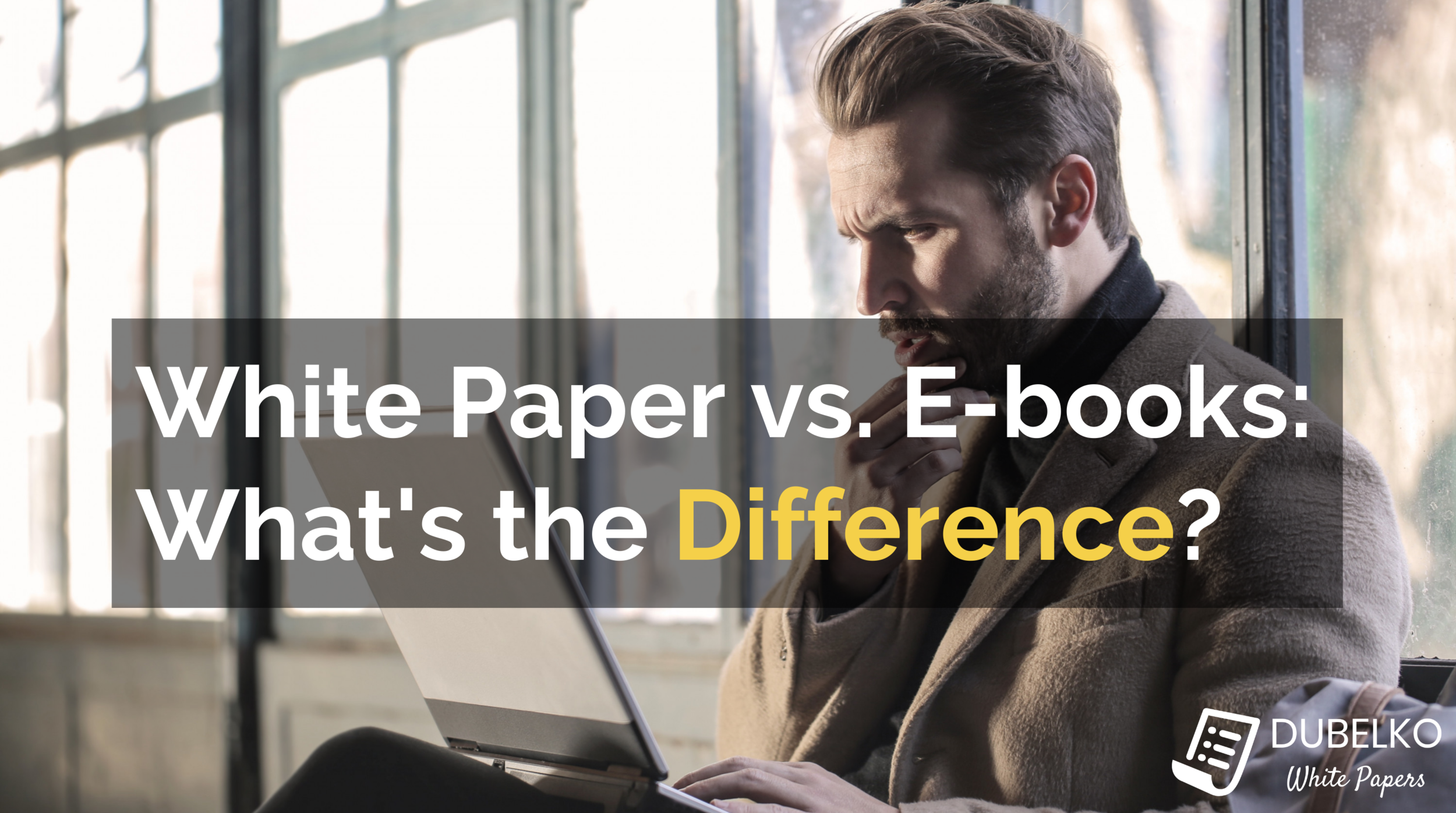White Papers vs. E-books: What's the Difference?
When it comes to content marketing, white papers and e-books are some of the most popular assets that businesses look to create. However, a common question that many people have is, “What’s the difference between them?”
While some marketers use “white paper” and “e-book” interchangeably, there are some key differences between the two forms of content. In this post, I’ll clarify the differences between white papers and e-books, and how you can best use either to achieve your marketing goals.
Typical White Paper Characteristics
Compared to e-books, white papers are more standardized when it comes to its formatting. White papers are typically between 6 and 12 pages, featuring a crisp design and some graphics (fewer than in white papers). The design of white papers will be more business-oriented, with more emphasis on statistics and expert opinions that drive home a point.
White papers will generally focus on the benefits of some product or service, offering its readers a better way to solve some problem or challenge. White papers are also used early in the sales cycle, however these documents also aim to explain a product or service besides generating leads and engaging prospects. A good analogy for a white paper would be a well-researched essay or article, since they both contain in-depth research along with expert knowledge.
Best Uses for White Papers
Selling B2B: White papers are useful for bringing up a relevant industry issue and discussing how your product or service can be an effective solution. However, white papers shouldn’t be salesy, as they work best as a soft sell that persuades perspective buyers. These documents should be seen as educational resources that convinces the reader to learn more about your product, service, technology, or methodology.
Educating Prospects: Prospects sometimes struggle to grasp the core function of your product or service, especially if it is complex. Due to its perception as an influential, fact-driven medium, white papers are the ideal tool for educating prospects when they are in research mode. By educating prospects and offering them helpful information as a part of the sales experience, you can generate more leads and convert them into buyers.
Becoming an Industry Thought Leader: a white paper be used to demonstrate forward thinking and cement your company into a leadership position in the eyes of readers. If your company has some original thinking on an industry problem or a trend, you can use a white paper to establish your expertise on the topic and highlight how your product or service can help.
Typical E-book Characteristics
Compared to white papers, e-books are less standardized when it comes to its formatting. They can be anywhere between 10 and 200 pages, and can contain wildly different designs when it comes to backgrounds, typefaces, graphics, and other visual flourishes. Just about any kind of design can work, as long as you can make it look visually appealing.
In general, e-books will focus on some topic or problem, with the overall document offering an introduction to a problem. E-books are used early in the sales cycle, aimed at generating leads and engaging prospects. Modern e-books are comparable to slide decks, featuring plenty of design elements like images, videos, and graphics. As suggested in its name, e-books read more like books, with distinct chapters and quick takeaways.
Best Use for E-books
Selling B2C: B2C consumers typically don’t want to read. They want to shop. So if you’re selling B2C and have a big story to tell, an e-book would be a better choice than a white paper. This is especially true if nobody in your industry publishes white papers, since that might seem too intimidating or strange to download.
Engaging an Easily Distracted Audience: If your target audience leans younger or are often on the road, an e-book might be a better choice. While white papers are more business-oriented, e-books can be more fun and go more wild on the design elements, featuring wild typefaces and animated graphics.
Standing Out From Competitors: If everyone in your industry already publishes white papers, an e-book might just be what you need to break through the competing noise. By presenting your content as an e-book instead of a white paper, you just might be able gain more traction and get more downloads.
Conclusion
When it comes to white papers and e-books, here’s what you need to know:
White Papers:
6-12 pages
some graphics
focuses on benefits of some product or service
offers readers a better way to solve some problem
used to generate leads, engage prospects, and explain a product or service
analogous to a well-researched essay or article
E-book:
10-200 pages
lots of graphics
focus on some topic or poblem
offers readers an introduction to a problem
used to generate leads and engage prospects
analogous to a slide deck
At the end of the day, white papers and e-books have similar uses. An effective white paper will educate your target audience on a topic, help them solve a problem, or persuade them to make a decision. An effective e-book will do the same. If your content does those things, it won’t matter if you call it a white paper or e-book, since your audience will be eating it up and thanking you for the helpful content.
Found this post useful?
Click here for more helpful white paper guides.




